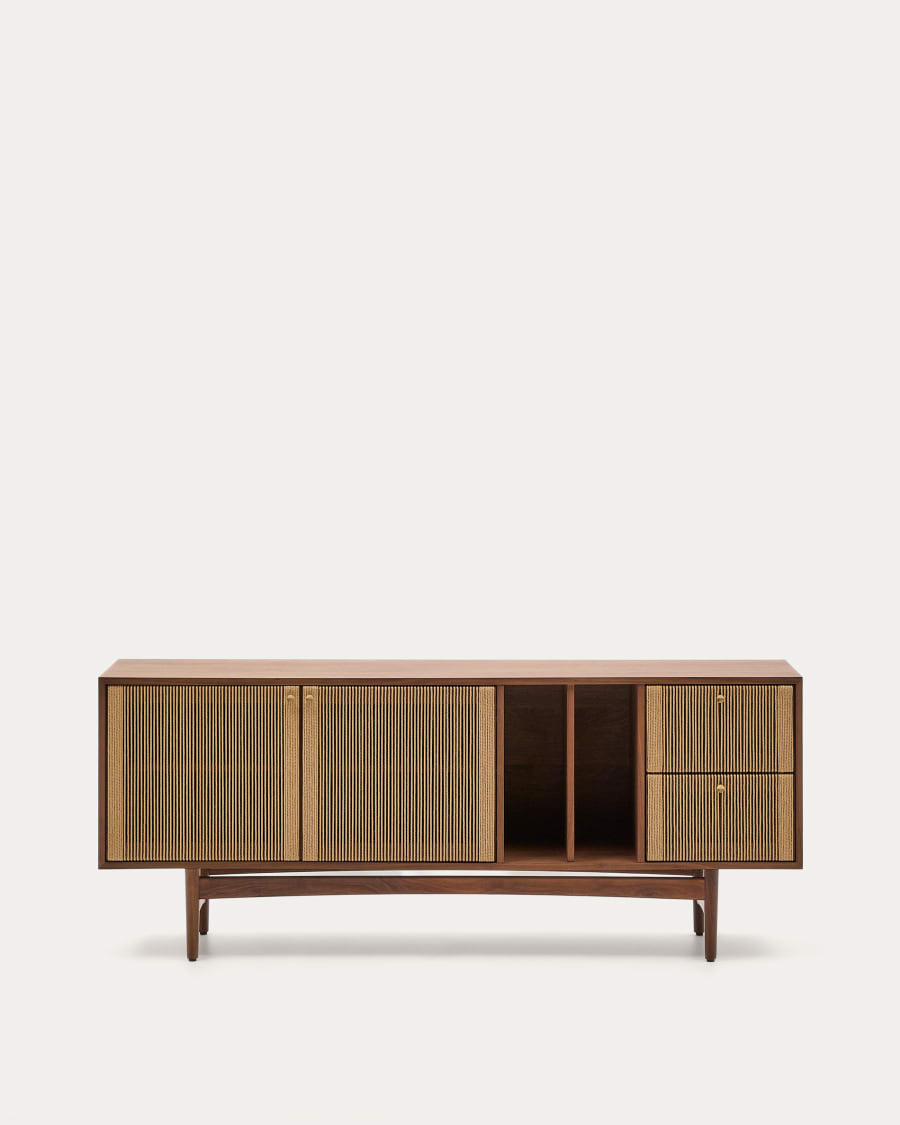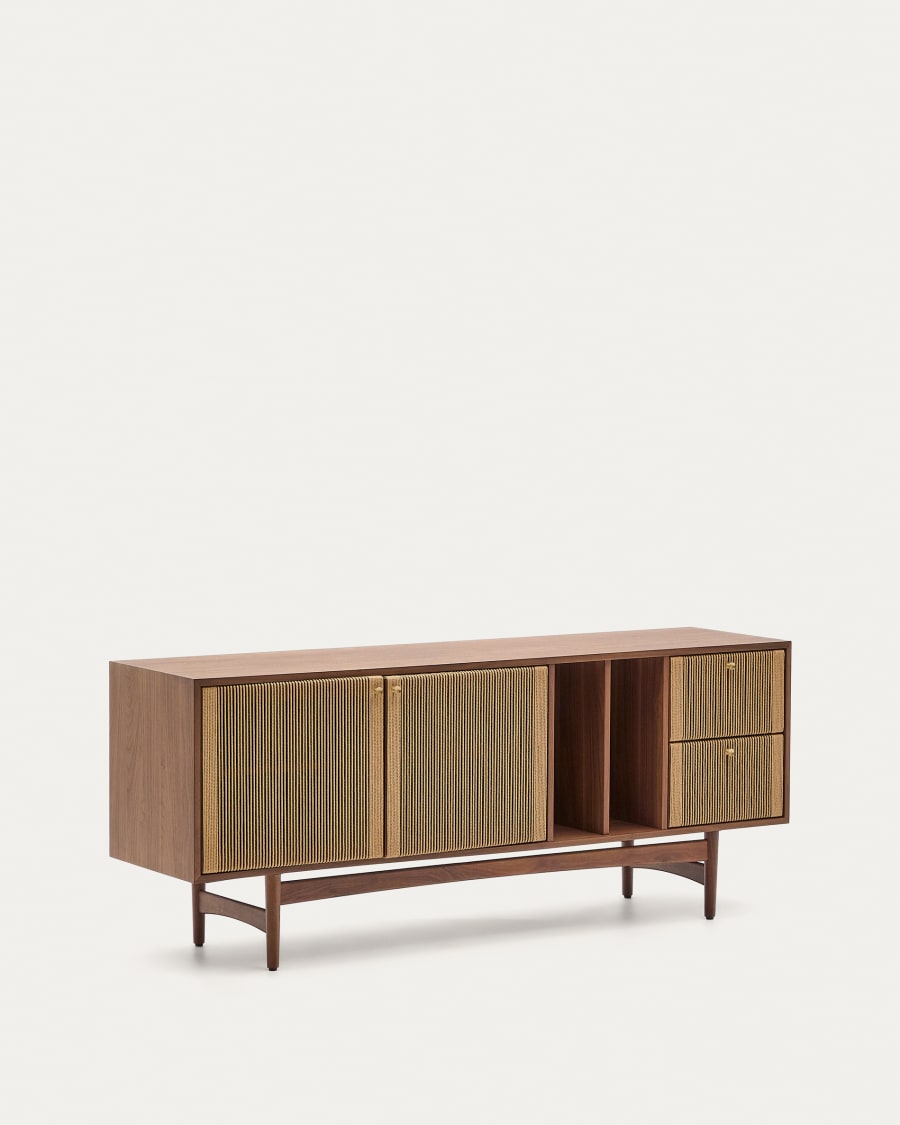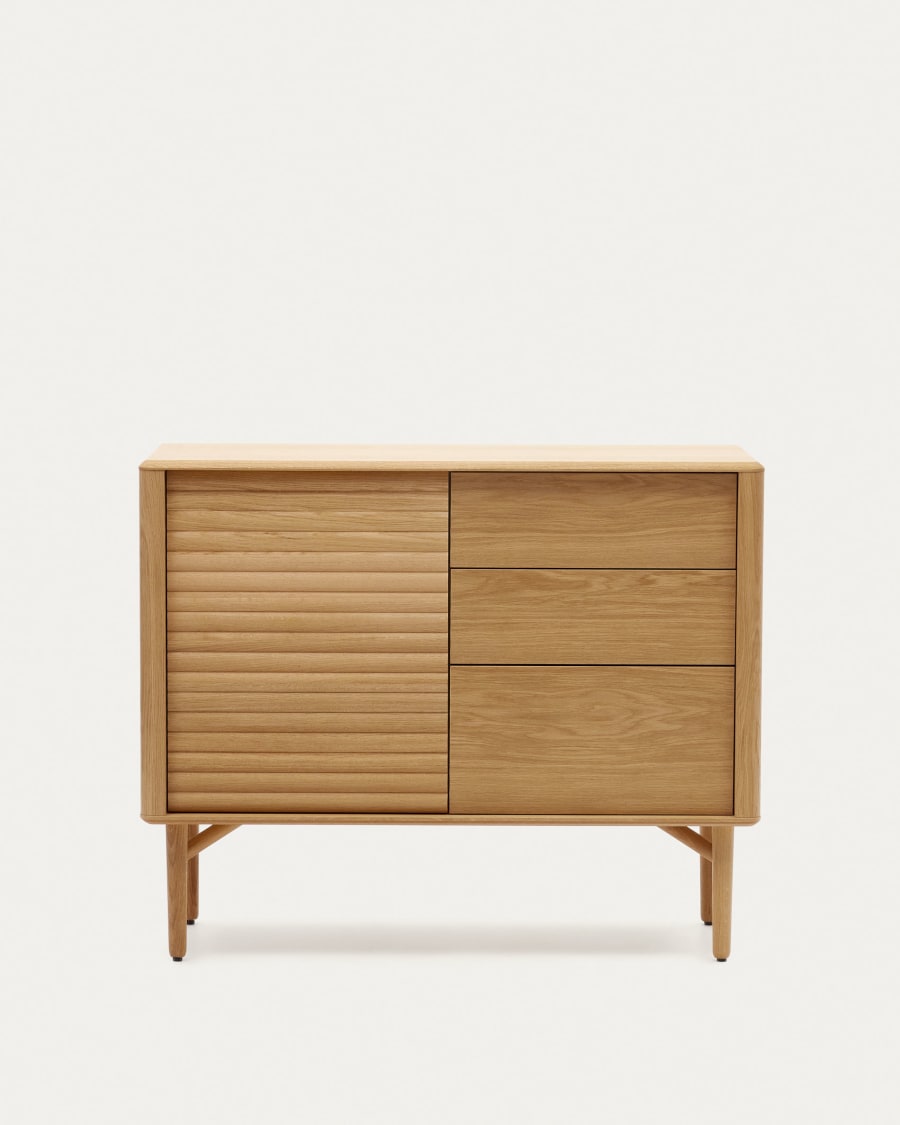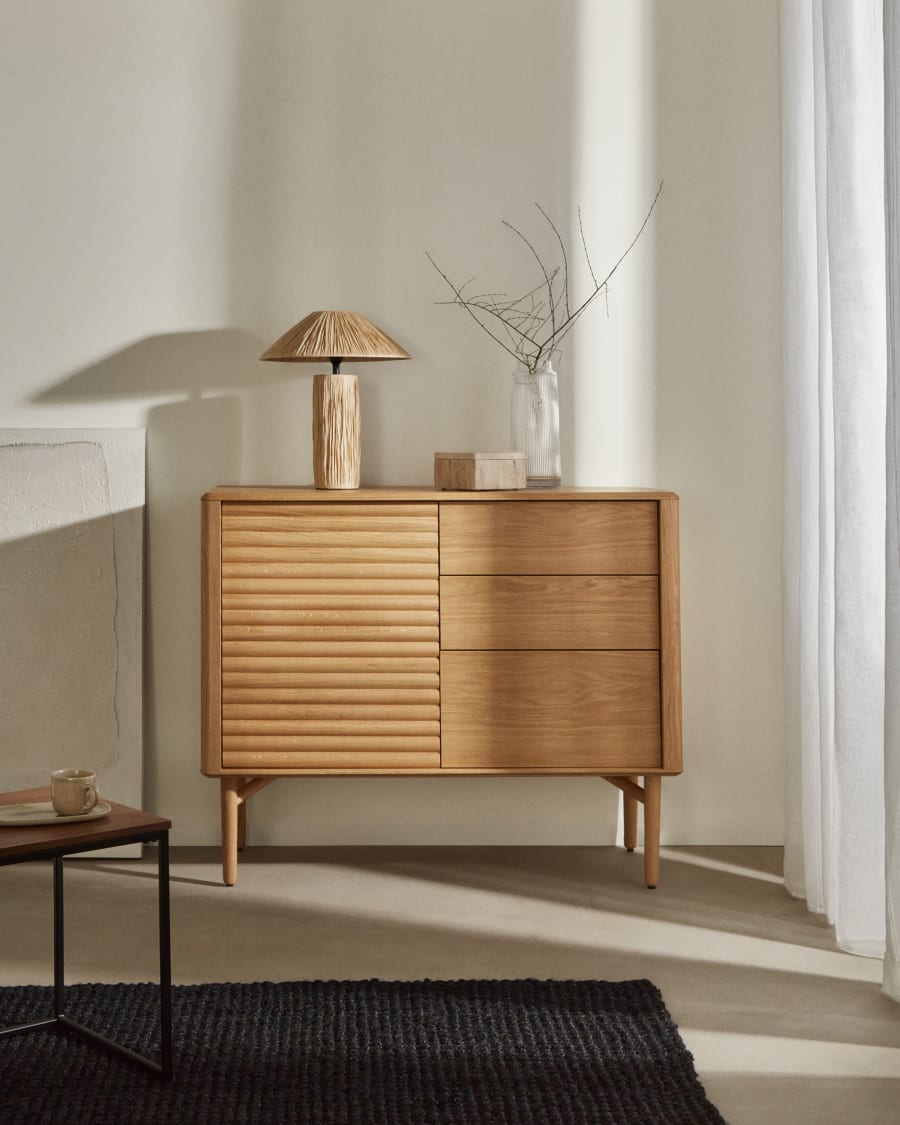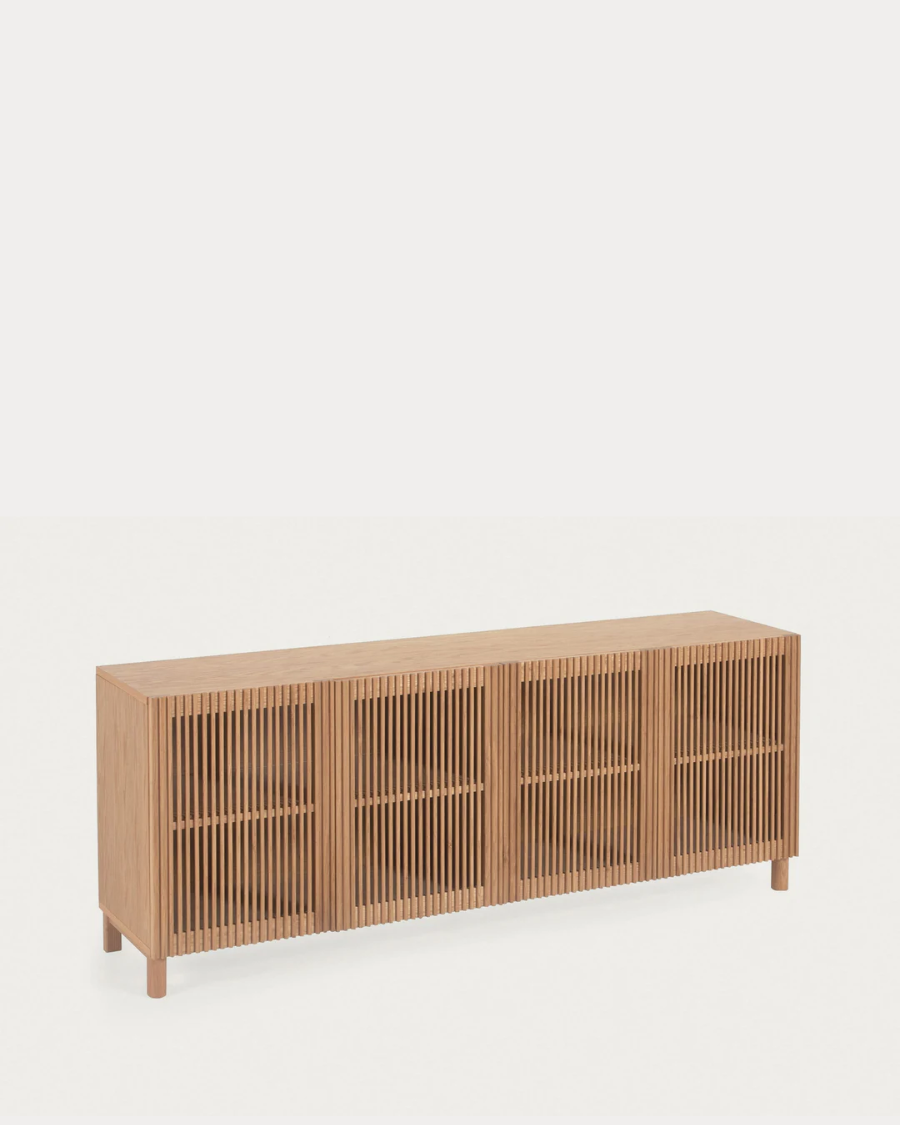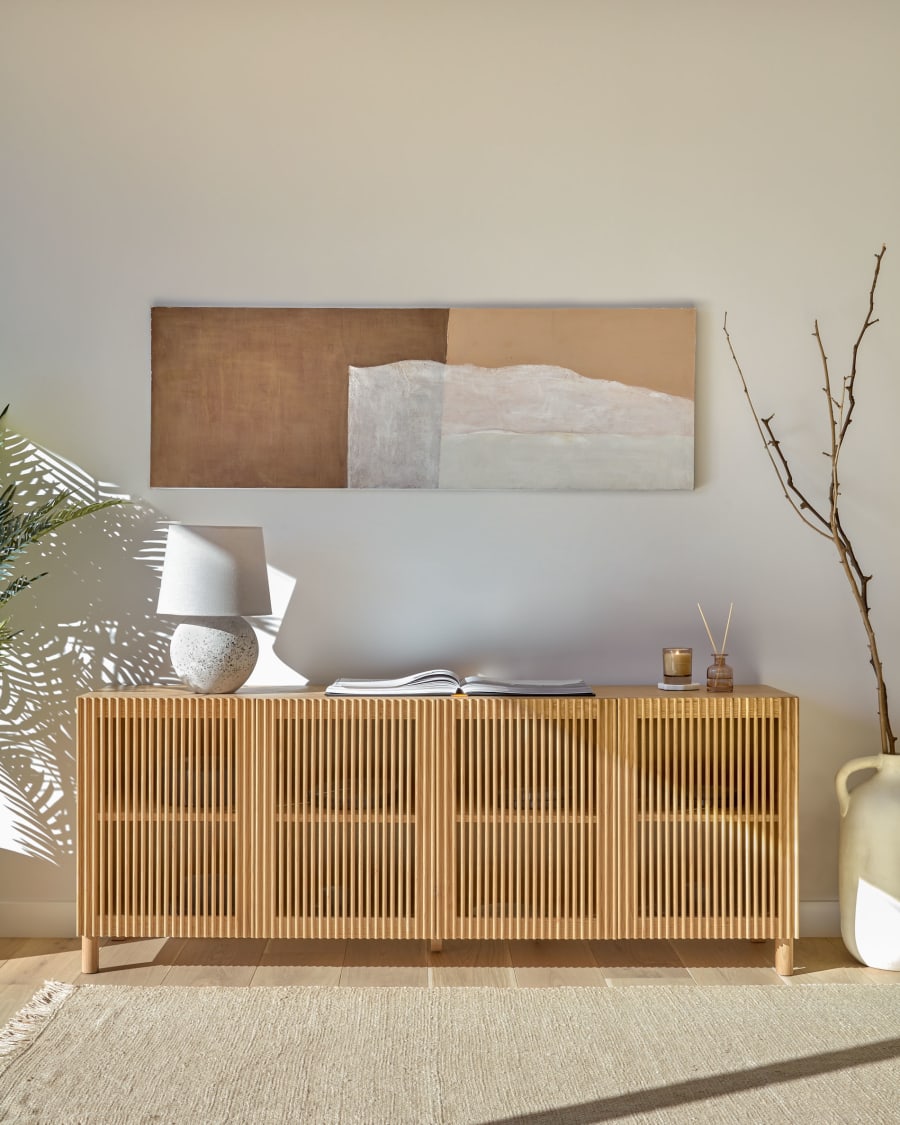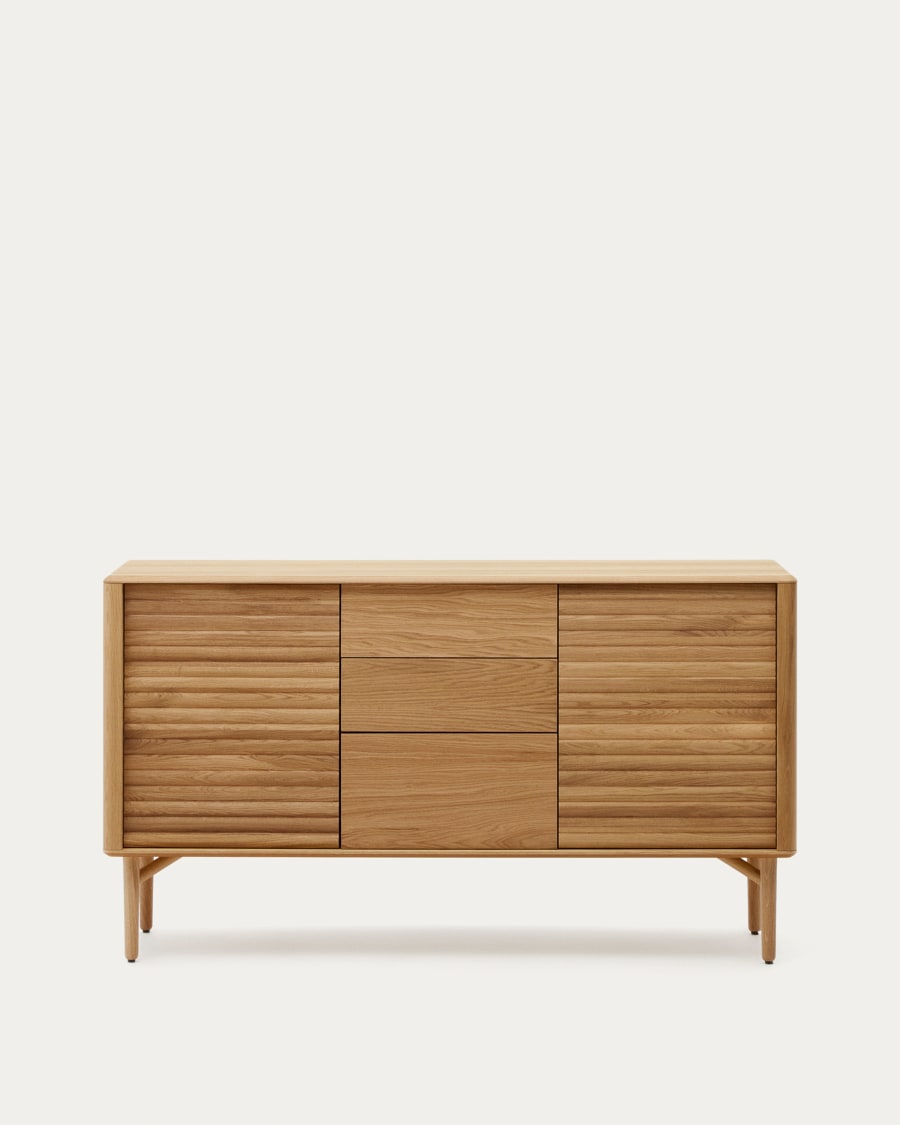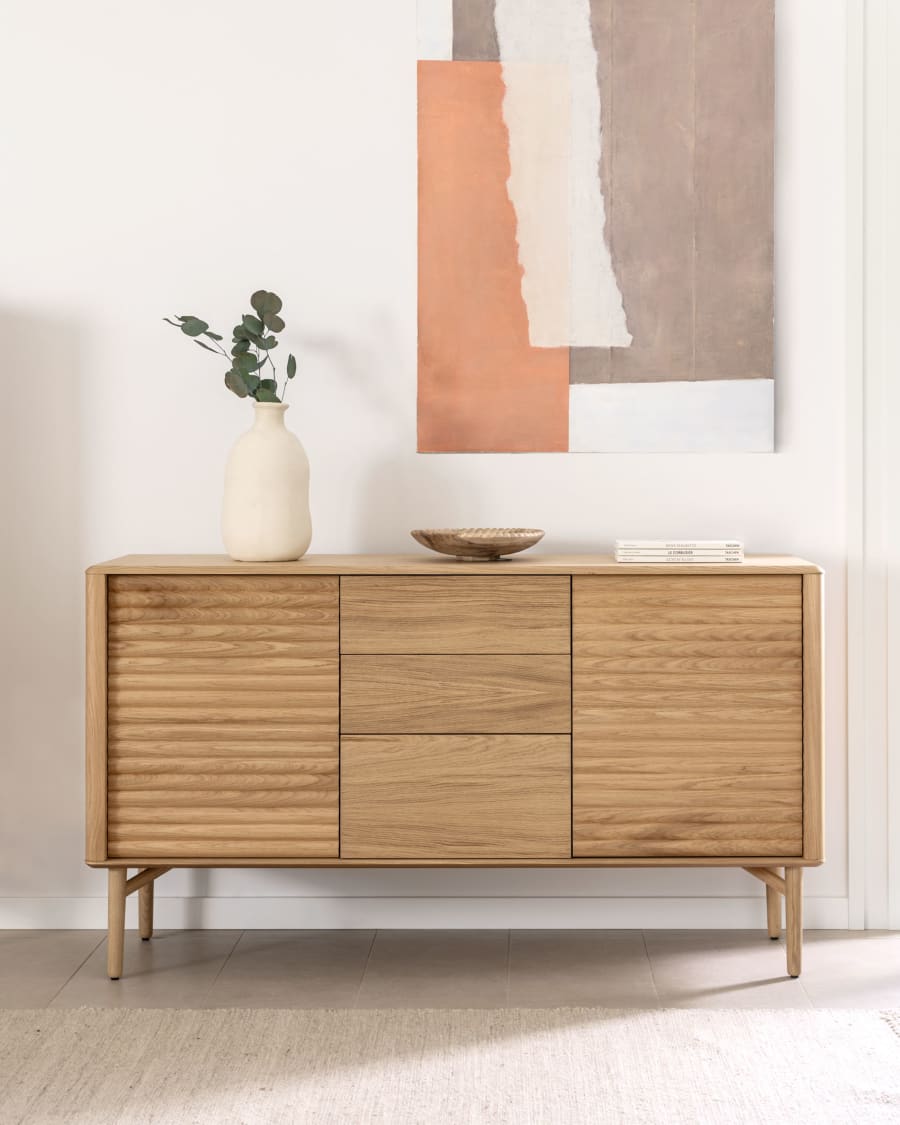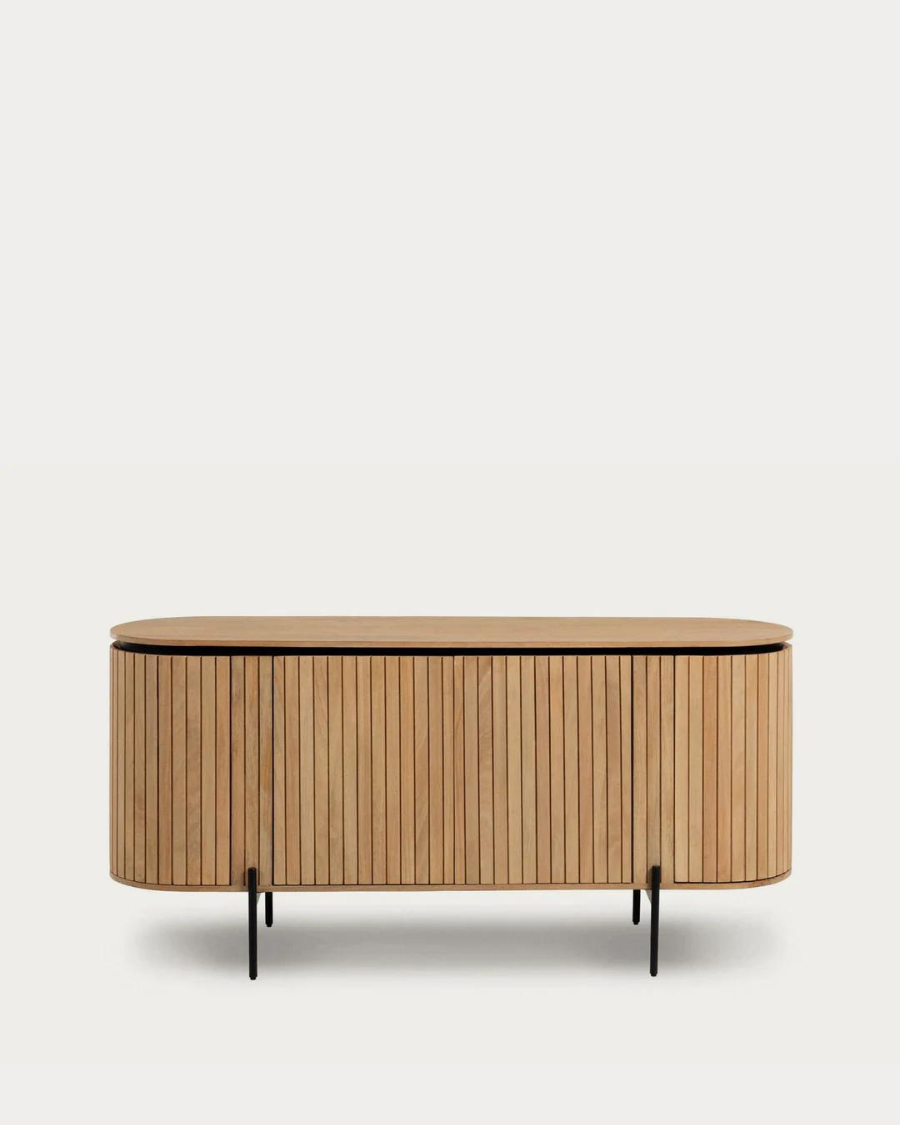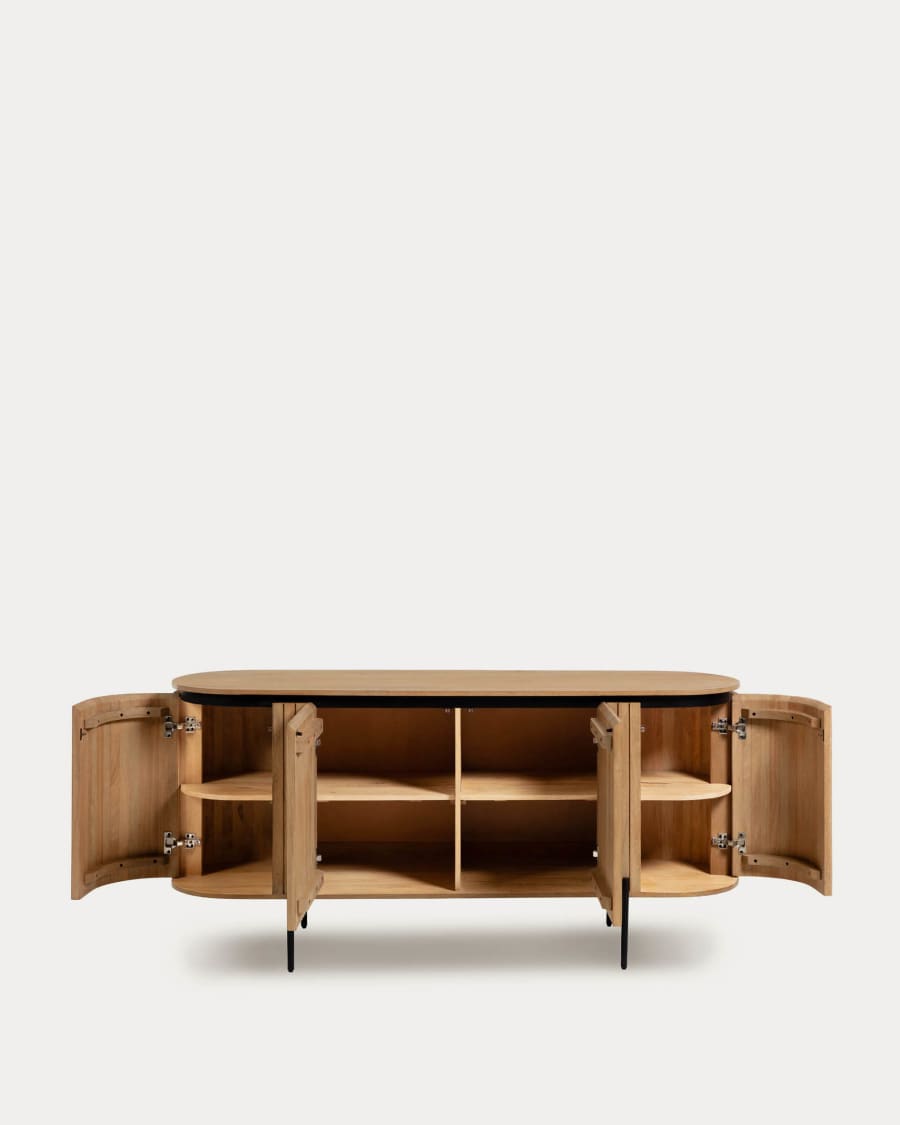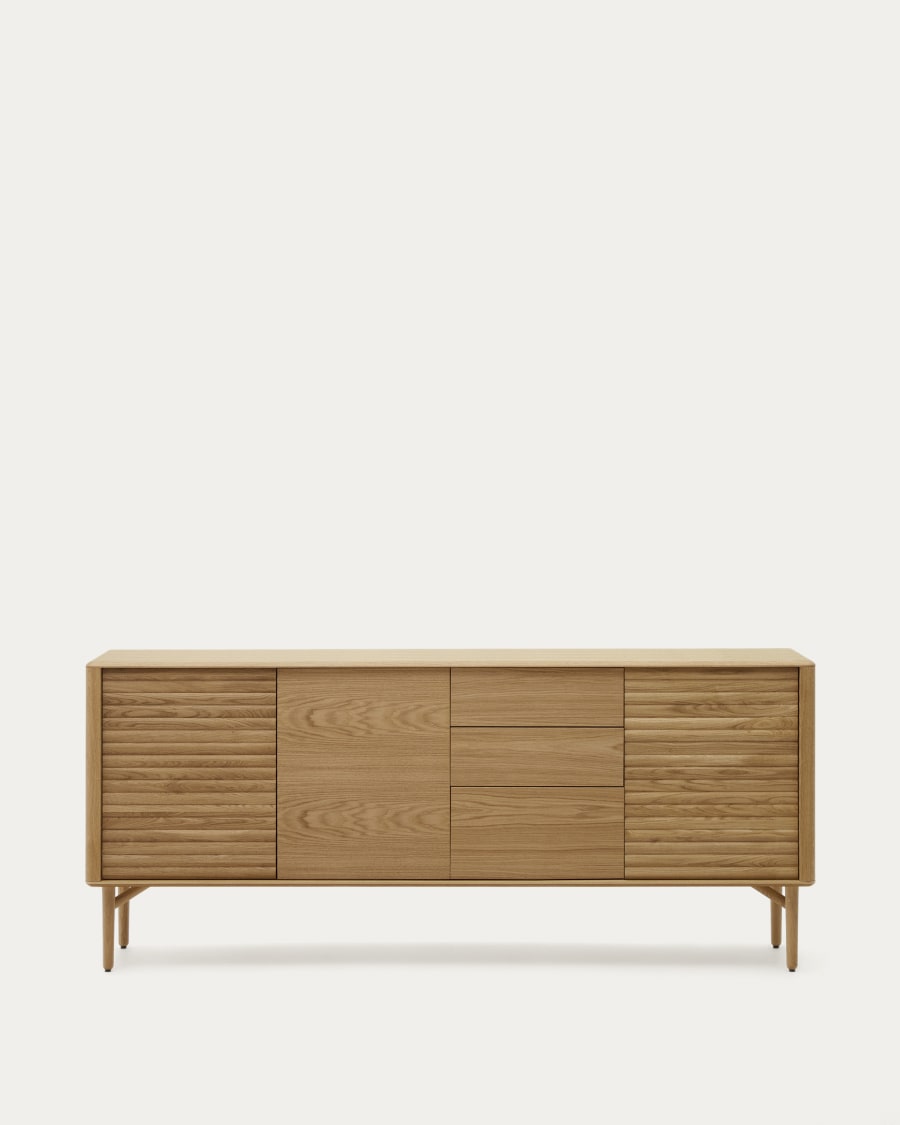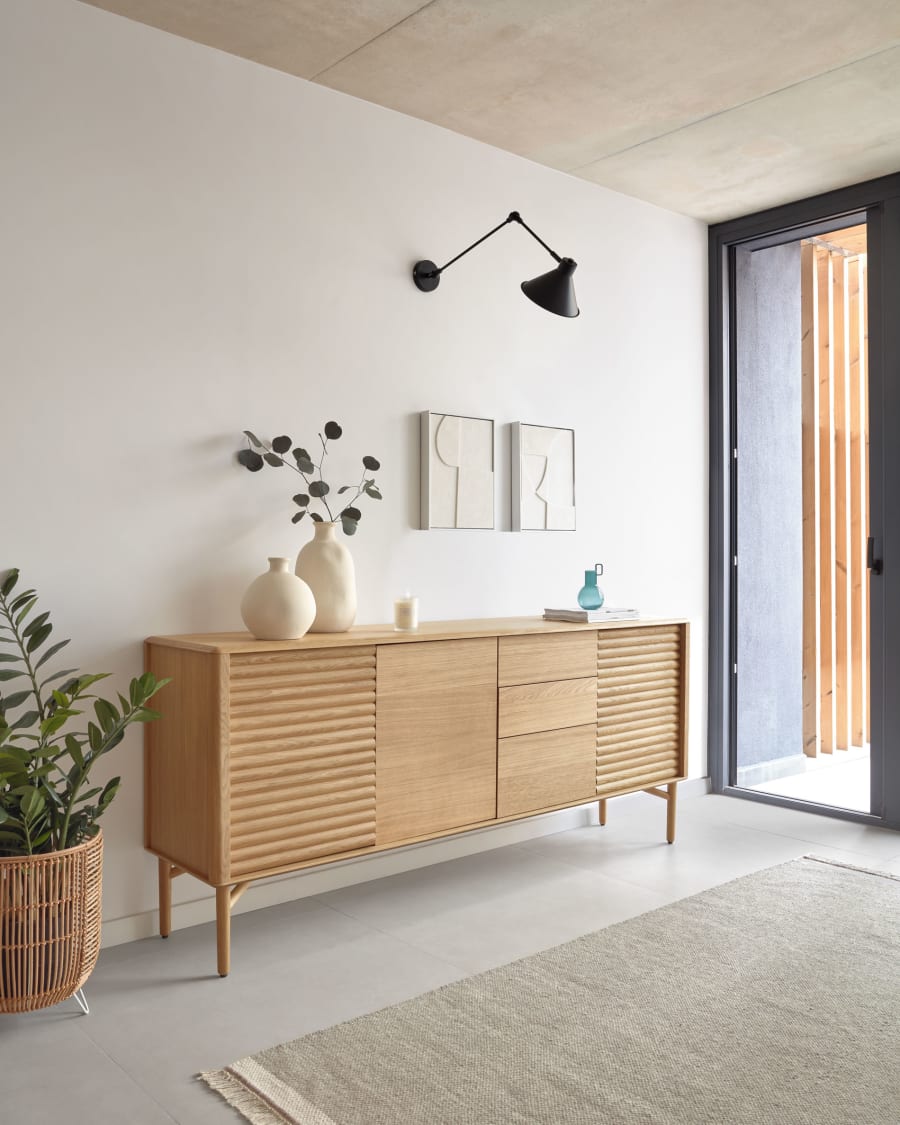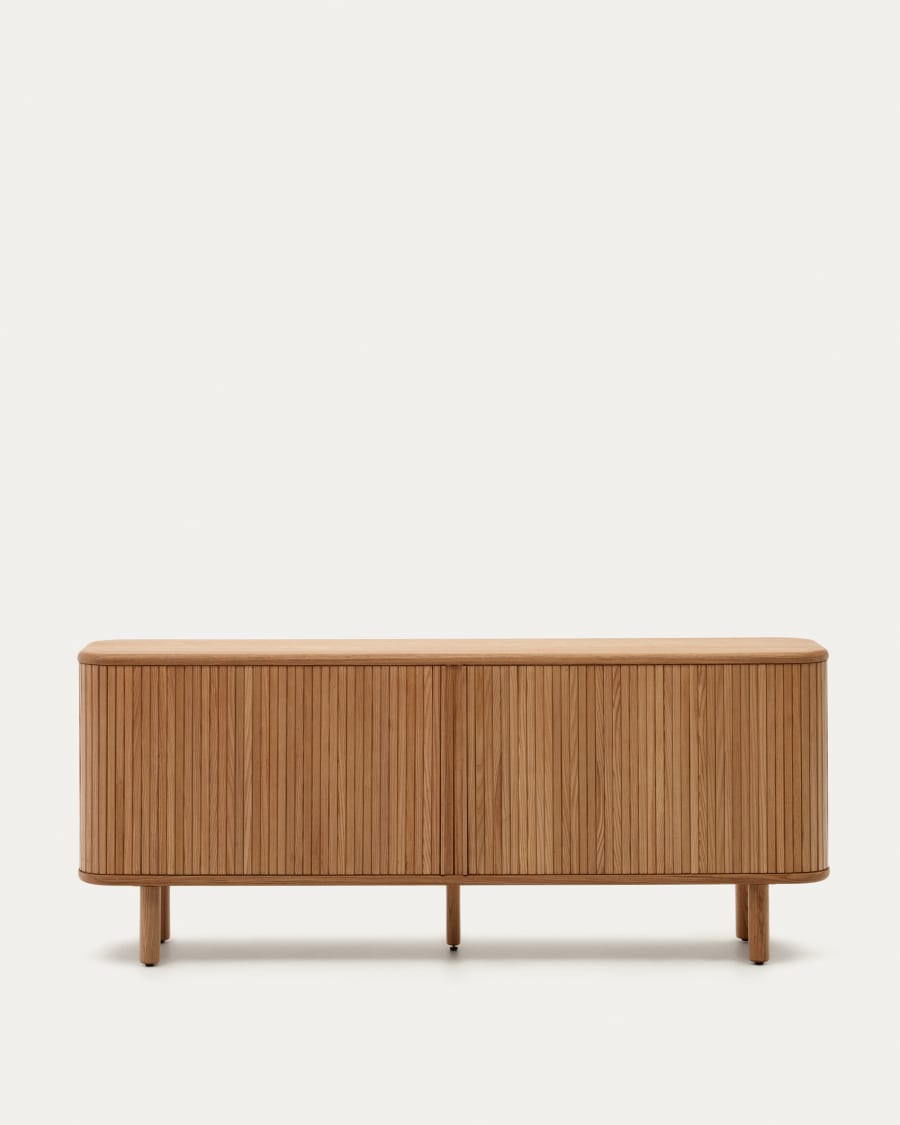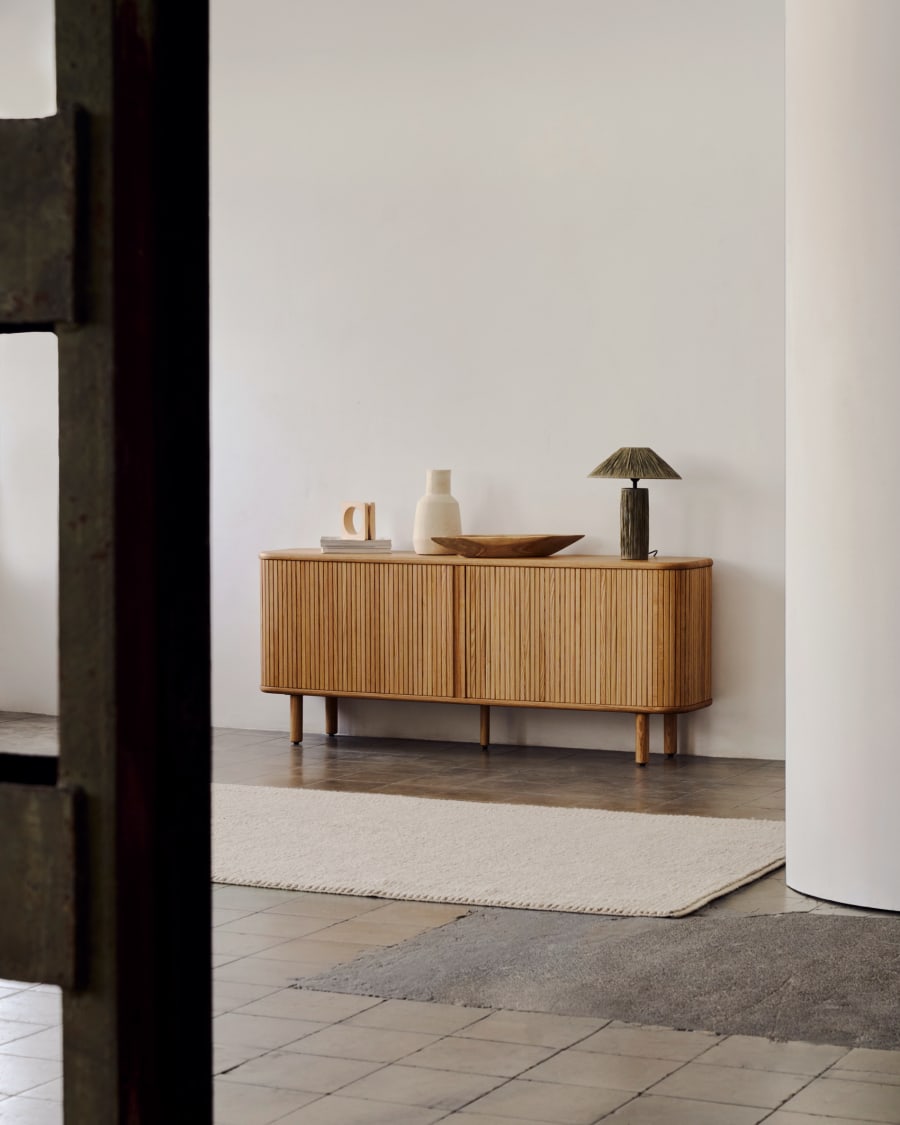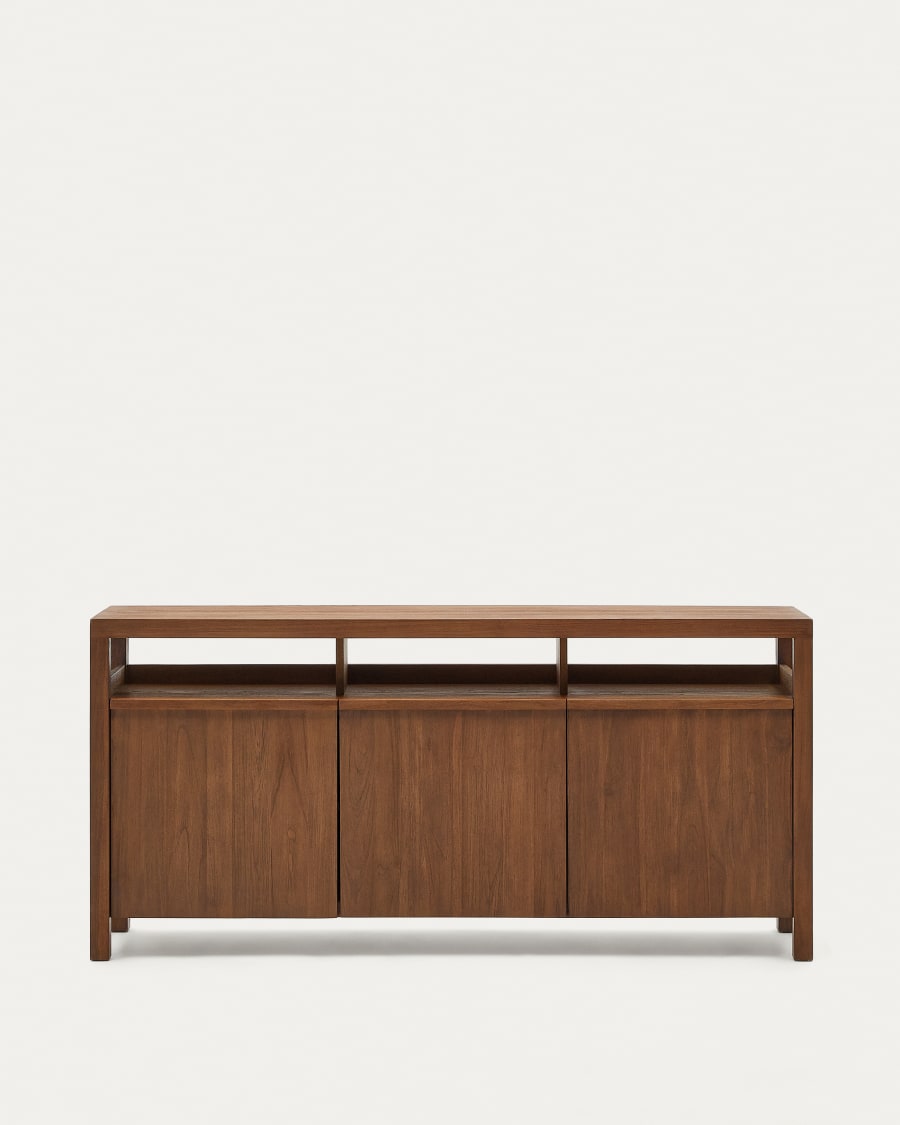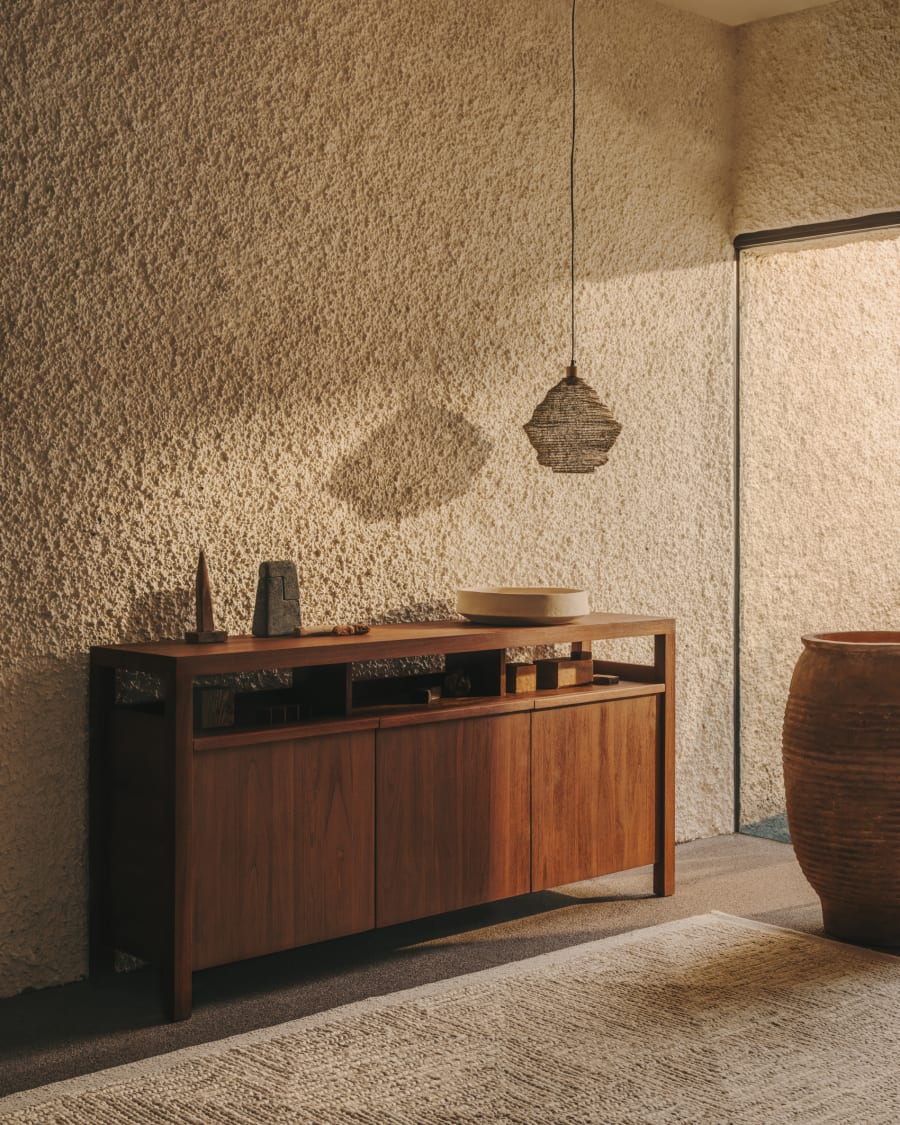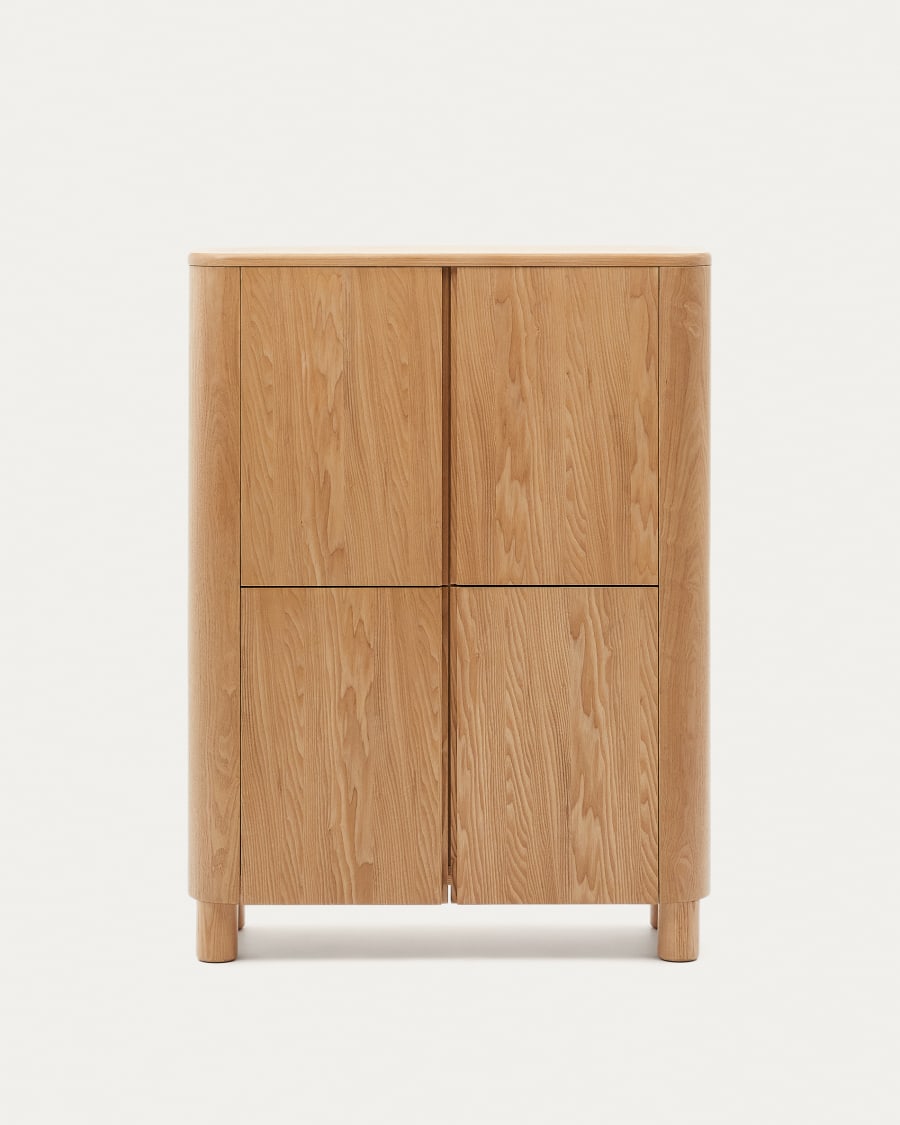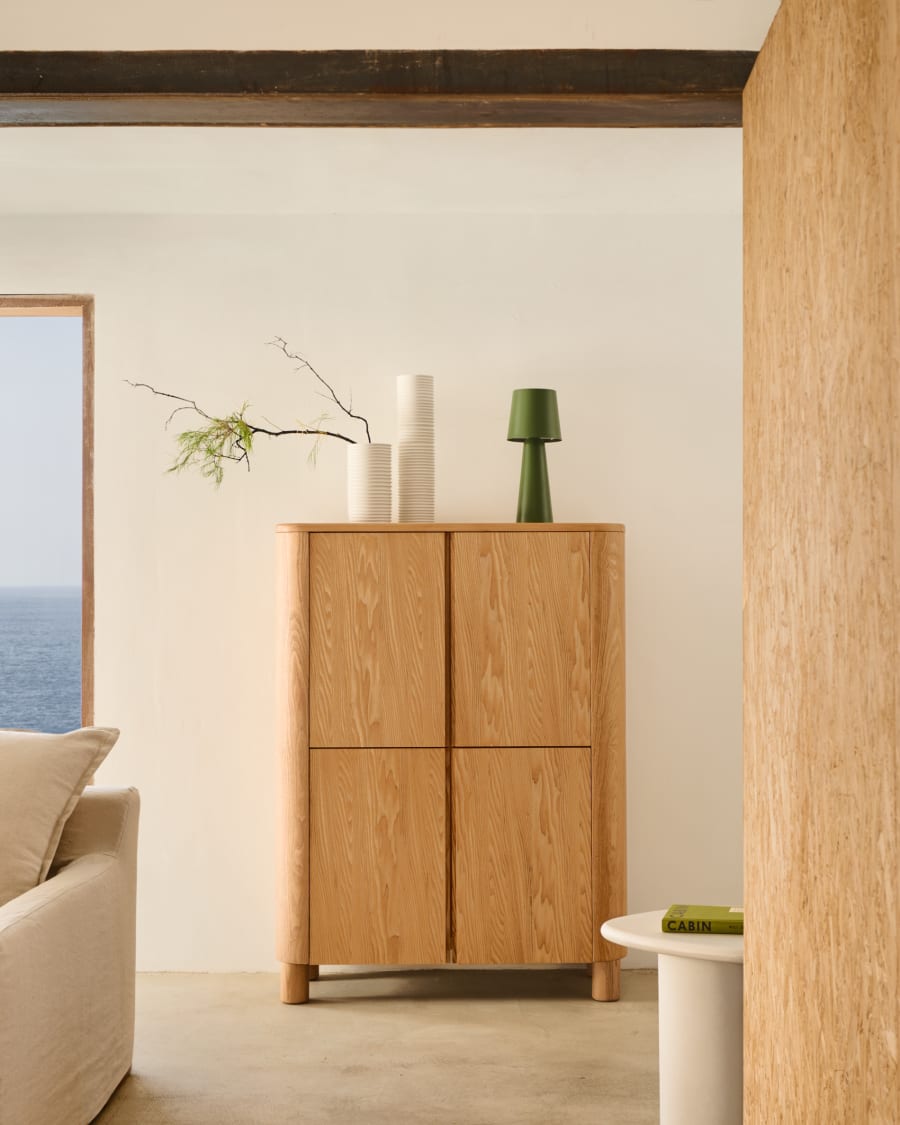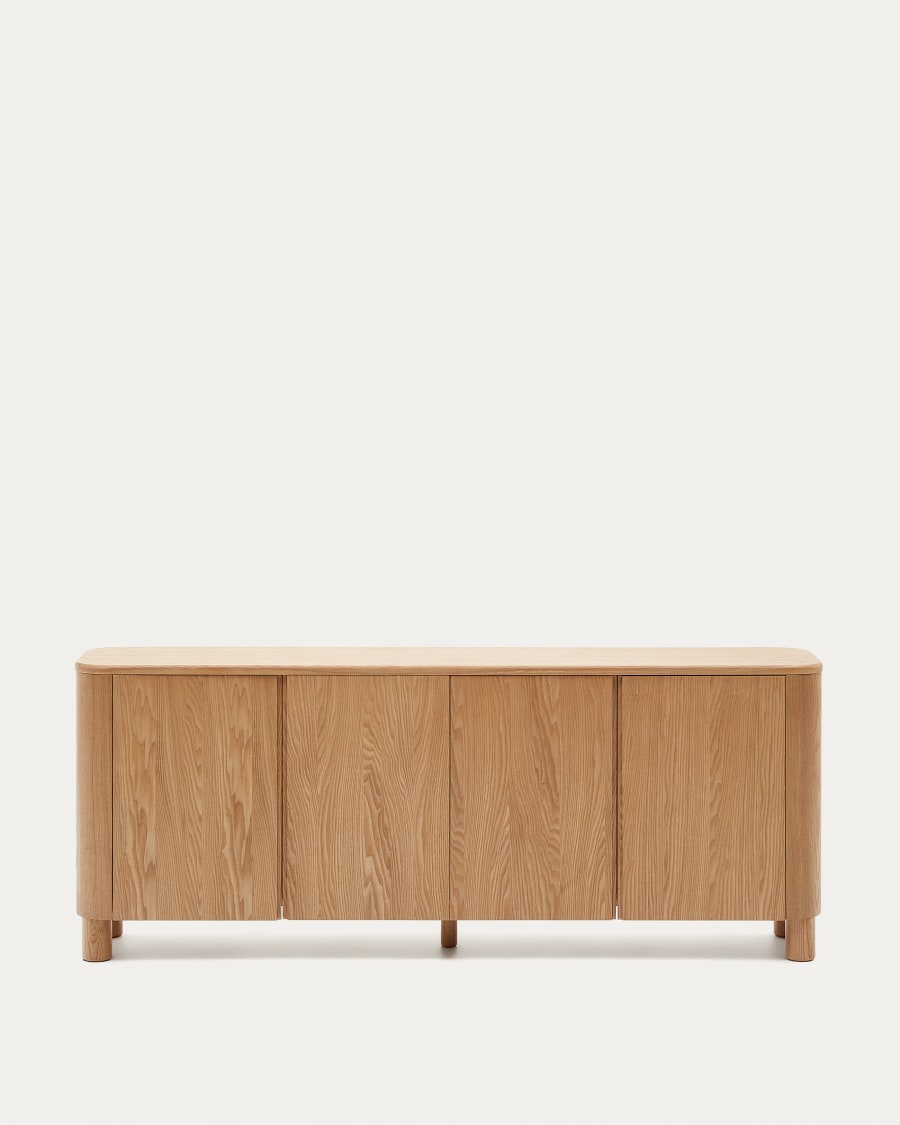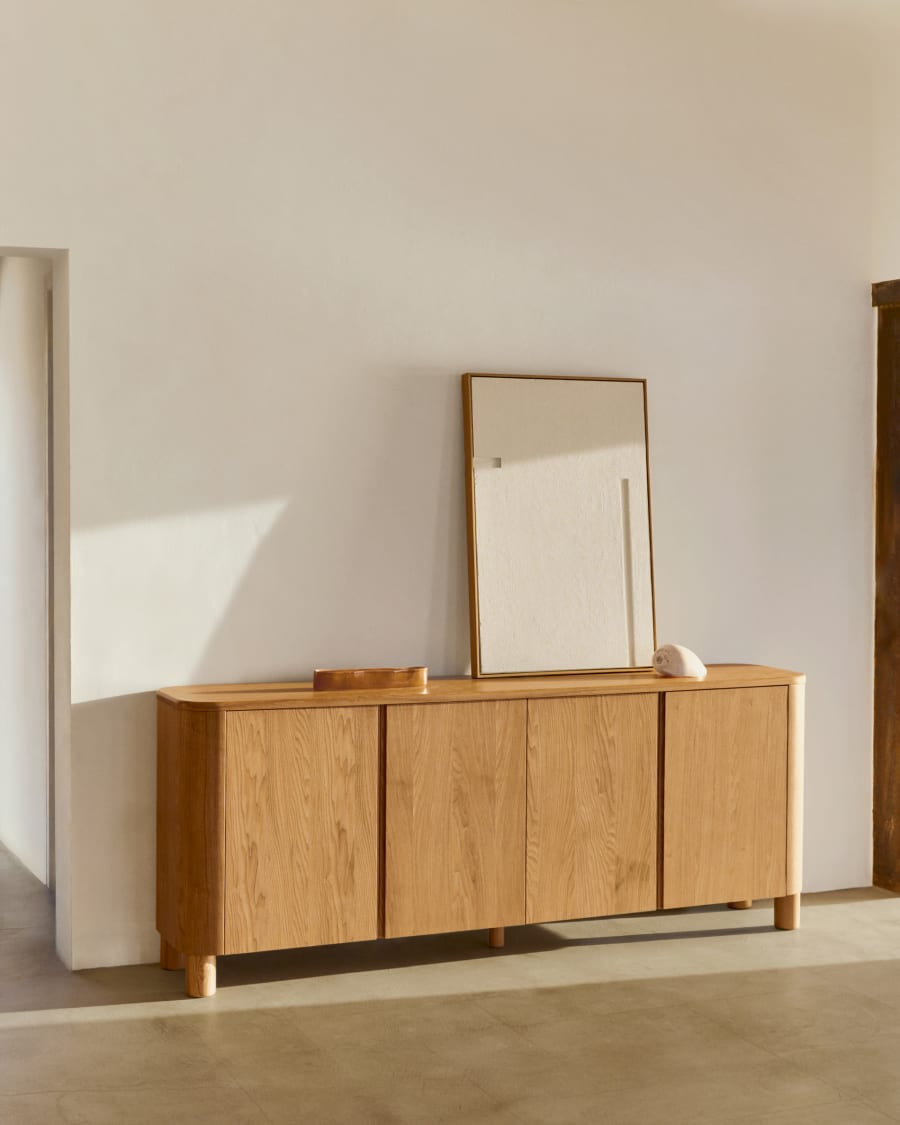- Home
- Japandi Sideboards
Japandi Sideboards
Japandi Sideboards – Modern Furniture Collection
What makes Japandi sideboards stand out? The answer lies in their unique blend of Japanese minimalism and Scandinavian functionality. This hybrid style merges two distinct design philosophies into one cohesive concept. Japanese aesthetics contribute serene simplicity and appreciation for natural imperfections, while Scandinavian design adds practicality and warmth.
Japanese Influence
Japanese design principles emphasize wabi-sabi – the beauty of imperfection. Japandi sideboards showcase this through organic textures in wood grains and subtle asymmetry. These elements create visual interest without disrupting tranquility. Natural materials like untreated oak or cedar echo the Japanese reverence for nature's raw beauty.
Scandinavian Contribution
From Scandinavia comes hygge – the art of cozy contentment. Japandi sideboards incorporate this through rounded edges and warm wood tones. Scandinavian functionality shines in clever storage solutions like hidden compartments. The result? Furniture that balances calming aesthetics with everyday use.
Natural Materials Matter
What transforms ordinary furniture into Japandi masterpieces? The secret lies beneath the surface. These sideboards prioritize materials that feel as good as they look, creating tactile experiences that engage multiple senses.
Wood: Timeless Foundation
- Reclaimed oak with visible grain patterns
- Light-stained ash for Scandinavian brightness
- Dark walnut accents inspired by Japanese ink
Stone and Rattan Accents
Some designs incorporate stone tabletops for grounding weight or woven rattan panels for texture. These elements create visual balance – a nod to both cultures' connection with nature. Even hardware features minimal metal pulls in brushed brass or matte black.
Design Philosophy
Lines and Tones
Japandi sideboards follow a "less is more" approach. Clean horizontal lines dominate, often with subtle curvature for softness. Neutral palettes reign supreme – think:
- Cloud gray
- Warm ivory
- Weathered oak
- Slate black accents
Functional Elegance
Every curve serves a purpose. Slatted wood panels allow air circulation while adding visual rhythm. Magnetic closures keep doors silent, and hidden guides ensure smooth drawer operation. These details prove beauty and usability can coexist.
Modern Interior Integration
Clutter-Free Living
These sideboards combat modern chaos through intentional design. Generous storage hides essentials while curated display spaces let homeowners highlight cherished objects. The "anchor" design means one statement piece replaces multiple smaller items, maintaining spatial harmony.
Versatile Placement
From living rooms to entryways, Japandi sideboards adapt seamlessly. Use as TV stands with cable management cutouts, dining room servers with built-in wine racks, or hallway consoles with integrated lighting. Their neutral presence complements both industrial lofts and coastal cottages.
Timeless Appeal
Japandi sideboards transcend passing trends. They embody sustainable design through durable materials and classic proportions. Unlike disposable furniture, these pieces age gracefully – patinas develop in wood, and woven elements gain character over time. This enduring quality makes them investments in both style and mindfulness.
Why settle for ordinary storage solutions? Japandi sideboards transform homes into sanctuaries of calm sophistication. They prove that true design excellence lies in marrying heritage techniques with contemporary needs, creating spaces where every line tells a story and every material serves a purpose.
What Are Japandi Sideboards?
A Japandi sideboard merges the minimalist Scandinavian ethos with the refined Japanese aesthetic, creating furniture that balances utility and serenity. This hybrid style prioritizes clean lines, natural textures, and timeless craftsmanship, aiming to foster tranquility without sacrificing practicality. Unlike transient trends, Japandi sideboards emphasize enduring design through materials like raw wood, stone, and rattan, celebrating subtle imperfections via the Wabi-Sabi philosophy. They serve dual purposes: organizing spaces while acting as visual anchors that promote calm through intentional simplicity.
These sideboards integrate Scandinavian hygge—cozy textures and warm tones—with Japanese wabi-sabi, which honors natural irregularities. Their construction often features light oak, dark teak, or woven rattan, paired with muted palettes of white, beige, and charcoal. This creates a subtle contrast between Nordic brightness and Japanese depth. Functionality is key: hidden compartments, smooth glides, and modular layouts ensure clutter-free living. By blending ergonomic design with organic elements, Japandi sideboards transform rooms into serene, purposeful environments where every detail feels both intentional and effortless.
Key Design Elements Of Japandi Sideboards
Natural Materials And Textures
Japandi sideboards prioritize natural materials like oak, mango, ash, and acacia, often in raw or lightly finished states to highlight organic textures. Stone, rattan, or caning add subtle contrast. Imperfections in materials are celebrated, enhancing authenticity and durability. These choices create a tactile connection between indoor spaces and nature, while the use of sustainably sourced wood aligns with eco-conscious design principles.
Minimalist Forms And Clean Lines
Defined by minimalist forms and clean lines, these sideboards avoid ornamentation. Fluted or reeded fronts (grooved surfaces) add texture while maintaining simplicity. Contrasting elements like black metal legs or handles pair light woods with industrial touches, merging Japanese restraint with Scandinavian warmth. The interplay of smooth and textured surfaces creates depth, ensuring visual interest without sacrificing the style’s serene essence.
Functional Design And Storage Solutions
Beyond aesthetics, Japandi sideboards emphasize practicality for clutter-free spaces. Storage features include:
- Doors: Conceal compartments for bulkier items
- Drawers: Organize small essentials neatly
- Adjustable shelves: Adapt to varied object heights
These elements work cohesively to balance utility and elegance. The design ensures every functional component—whether hidden compartments or open surfaces—complements modern, uncluttered living while retaining warmth through natural textures and intentional contrasts. Their blend of intuitive storage and subtle aesthetics makes them practical anchors in contemporary interiors.
Choosing the Right Japandi Sideboard for Your Home
Considering Size and Room Placement
Selecting the appropriate Japandi sideboard starts with assessing your space. Measure the area’s width, depth, and height to ensure the sideboard complements rather than overwhelms. For a living room, prioritize a low-profile design to maintain openness. In hallways, opt for narrower models to avoid crowding. Bedrooms benefit from compact units that balance storage with accessibility. A harmonious fit ensures the sideboard enhances flow while adhering to Japandi’s minimalist ethos.
Harmonizing with Your Existing Decor
Japandi sideboards thrive on understated synergy. Match natural wood tones—like light oak or walnut—with similar finishes in your space for continuity. Introduce contrast with black metal legs or handles if your decor leans neutral, creating subtle depth. Prioritize cohesion: the sideboard should feel like an extension of your design. Incorporate organic textures (e.g., rattan baskets) or muted fabrics nearby to reinforce Japandi’s blend of simplicity and warmth.
Selecting the Ideal Color Palette
Japandi’s color scheme revolves around earthy, neutral tones that evoke tranquility. These hues bridge Scandinavian crispness with Japanese serenity, ensuring timeless appeal.
- Neutral tones: Soft whites and beiges amplify brightness and openness.
- Natural wood finishes: Highlight the grain’s authenticity, adding organic warmth.
- Black accents: Matte metal hardware or legs ground the piece with modern contrast.
- Subtle greys and olive greens: Introduce muted depth without compromising minimalism.
These choices foster a calming atmosphere, aligning with Japandi’s emphasis on balance and mindful living.
Styling Your Japandi Sideboard
Styling a Japandi sideboard centers on intentional simplicity, merging Nordic minimalism with Japanese craftsmanship. Create curated vignettes that enhance calm by selecting a few purposeful items. Prioritize natural materials, neutral tones, and organic shapes while avoiding clutter. Let each object reflect Japandi’s ethos of functional elegance and serene beauty.
| element | description | Japandi principle |
|---|---|---|
| minimalist ceramics | Hand-thrown pottery or simple vases in earthy tones. | Wabi-Sabi, natural beauty |
| greenery | Single branches or small potted plants like snake plants in minimalist containers. | Connection to nature, life |
| art books | A small stack of art or design books with neutral covers. | Intellectual stimulation, curated display |
| subtle lighting | A sculptural table lamp or candle for ambient light. | Warmth, hygge, atmosphere |
Focus on purposeful simplicity: choose ceramics with subtle imperfections, add greenery in simple pots, stack a few art books, and use soft lighting for warmth. These elements embody Japandi’s balance of functionality and serenity, merging natural textures with mindful living.
Caring For Your Japandi Sideboard
Preserve your Japandi sideboard with regular dusting using a microfiber cloth and immediate spill cleanup with a dry cloth. Avoid harsh chemicals or abrasives to protect the wood’s natural grain. For deeper cleaning, use pH-neutral solutions along the grain. If your piece has rattan or caning, gently vacuum or wipe with a damp cloth—excess moisture can warp or mold it.
Apply a thin layer of beeswax or plant-based oil to protect surfaces while emphasizing sustainability and natural textures. Shield the sideboard from direct sunlight and extreme temperatures to prevent fading or cracks. Reapply beeswax annually for waxed finishes; oil oiled wood periodically. Test finishes: water beads on sealed surfaces but absorbs into untreated wood.
Maintain minimalist charm with eco-conscious care. This ensures your sideboard stays a functional centerpiece in modern spaces—where organic materials meet timeless design.
FAQ
What defines a Japandi sideboard's design philosophy?
A Japandi sideboard merges the tranquility of Japanese minimalism with Scandinavian functionality, emphasizing simplicity, natural elements, and craftsmanship. Rooted in Wabi-Sabi principles, these pieces celebrate organic imperfections while offering timeless utility. They balance serene aesthetics with practical storage solutions, creating clutter-free spaces that exude calmness and intentional design.
How do Japandi sideboards incorporate natural materials?
Japandi sideboards prioritize authentic materials like oak, mango, ash, and acacia woods, often showcasing their raw or lightly finished textures. Complementary elements like rattan, caning, or stone add tactile warmth. The design embraces natural grain variations and subtle flaws, enhancing authenticity. This focus on organic textures connects interiors to nature while ensuring durability and a grounded, earthy atmosphere.
Are Japandi sideboards suitable for small spaces?
Yes! Their minimalist proportions make them ideal for compact areas. Measure your room carefully to avoid overwhelming the space. Sleek profiles and recessed handles maintain visual lightness, while adjustable shelves and hidden compartments maximize storage efficiency. Opt for lighter wood tones or slim silhouettes to enhance spatial flow without sacrificing Japandi’s signature harmony between form and function.
What color options work best for a Japandi sideboard?
Stick to serene, earthy tones like neutral creams, soft whites, and natural wood finishes to reflect Japandi’s calming ethos. Black metal accents (legs, handles) add grounding contrast. Subtle greys or muted olive greens can introduce organic depth without disrupting minimalism. Always prioritize cohesive material finishes that echo the design’s nature-inspired roots and uncluttered elegance.
How to maintain a Japandi sideboard's longevity?
For wooden surfaces, dust regularly with a dry cloth and clean spills immediately with a damp cloth and pH-neutral cleaner. Avoid harsh chemicals to preserve finishes. For rattan or caning details, use a vacuum brush attachment or gentle wipe-downs. Protect from direct sunlight and extreme humidity to prevent warping. These practices ensure your sideboard retains its organic beauty and structural integrity for years.
